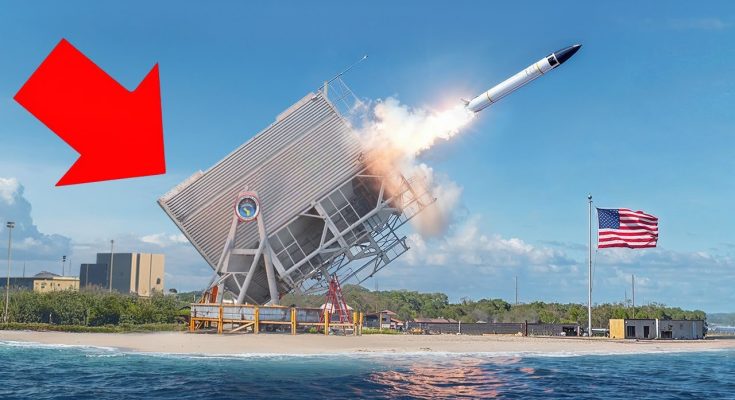Guam, a tiny U.S. territory in the Pacific Ocean, has long held strategic importance in America’s military presence in the Asia-Pacific region. Known for its military installations, the island is home to key airbases, naval ports, and missile defense systems. Recently, however, it gained attention for a highly secretive missile test that is shaking the stability of the region. This test, although classified in detail, signals the growing significance of Guam in America’s defense strategy and its increasing role in countering Chinese and North Korean missile threats.
The United States has been bolstering its military presence in the Pacific for years, largely in response to the expanding influence of China and the ongoing tensions with North Korea. Guam, positioned around 2,000 miles east of the Philippines, offers a strategic location for deploying advanced missile defense systems. This recent test, described as a “first of its kind” operation, involved testing a new missile defense system designed to intercept and destroy enemy missiles mid-flight, bolstering America’s ability to defend both itself and its allies in the region.
Although the specific details of the missile test remain classified, experts suggest that it involves advanced technologies, including laser-guided interceptors and hypersonic missile tracking. This test aims to prepare for any potential missile threats from regional adversaries, primarily China, which has been rapidly modernizing its missile arsenal, and North Korea, which has conducted several missile tests in recent years. With Guam as a critical launch point for U.S. military operations in the Pacific, its missile defense capabilities are seen as key to maintaining the balance of power in the region.
The secrecy surrounding the test is indicative of the high-stakes nature of these operations. As Guam serves as a base for several missile defense systems, including the Terminal High Altitude Area Defense (THAAD) and Aegis Ballistic Missile Defense systems, any new developments could tip the scales of military deterrence in the region. The results of the test, though undisclosed, are expected to have far-reaching implications on U.S. defense strategy, including its commitment to NATO allies and its partnerships with countries like Japan, South Korea, and Australia.
The test’s timing is also critical. With heightened concerns about Chinese aggression in the South China Sea and increasing provocations from North Korea, the missile test serves as a reminder that Guam is an integral part of the U.S. military’s “Pacific Pivot” strategy. This strategy focuses on positioning resources and personnel in the Pacific to ensure stability in the face of growing threats from authoritarian regimes. As tensions in the region escalate, the missile defense systems in Guam are becoming more critical for maintaining peace and securing America’s military dominance.
Critics argue that such missile tests could provoke further militarization of the region and escalate tensions with China and North Korea. While the U.S. insists its actions are purely defensive, the growing military infrastructure on Guam might be seen as a provocative step by its adversaries. Regardless, the test marks a new chapter in the region’s arms race and underscores Guam’s role as a linchpin in U.S. military strategy in Asia. With tensions rising, the significance of Guam as America’s “missile fortress” is only likely to increase in the years ahead.



